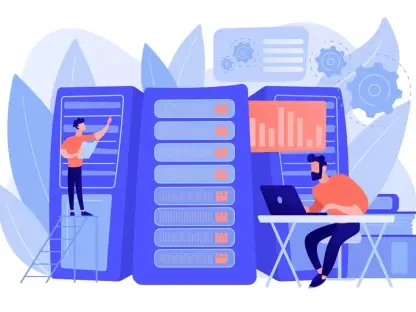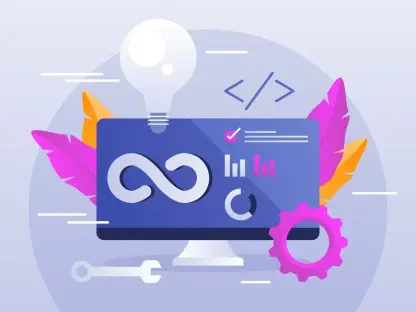Introduction
In an era where digital transformation dictates competitive advantage, software development teams face mounting pressure to deliver faster, more reliable solutions while grappling with escalating complexity in technology stacks and business demands. Artificial Intelligence (AI) has emerged as a game-changer in this landscape, reshaping how organizations approach the software development lifecycle (SDLC) with tools that promise unprecedented speed and efficiency. Yet, beneath the hype lies a critical challenge: ensuring that AI-driven acceleration does not compromise system reliability or team health, both of which are vital for sustainable business outcomes. As adoption rates soar—with nearly 90% of developers leveraging AI tools daily—business leaders must navigate a dual reality of opportunity and risk.
This editorial delves into the transformative impact of AI on software development, focusing on its implications for B2B environments where strategic decisions hinge on balancing innovation with stability. It explores how AI is redefining performance metrics, altering team dynamics, and amplifying organizational strengths or weaknesses. By examining key trends and data-driven insights, the discussion aims to equip decision-makers with actionable knowledge to harness AI effectively. The importance of this topic cannot be overstated, as poorly managed AI integration risks technical debt and burnout, while thoughtful adoption can drive significant productivity gains and competitive edge in a rapidly evolving market.
AI as a Catalyst for Strategic Development Outcomes
AI’s integration into software development is not merely a technological upgrade but a strategic pivot that can redefine business success for B2B organizations. With tools that automate code generation and testing, AI enables teams to slash delivery timelines, allowing companies to respond swiftly to market needs. Data from recent industry reports indicates that 80% of developers using AI tools report faster delivery cycles, a critical advantage for enterprises aiming to outpace competitors. However, the true business value lies in aligning these gains with long-term goals like customer satisfaction and operational resilience, rather than focusing solely on speed.
Beyond raw efficiency, AI acts as a mirror to an organization’s existing capabilities, magnifying both strengths and systemic flaws. High-maturity companies with robust governance and observability practices see substantial improvements in throughput and stability, while less prepared entities face increased rework and hidden technical debt. This disparity underscores a vital lesson for business leaders: AI adoption must be underpinned by strong foundational systems to deliver measurable outcomes. For instance, firms with mature version control and platform engineering can leverage AI to enhance reliability, turning technical innovation into a strategic asset that supports client trust and retention.
The sociocognitive shift induced by AI also warrants strategic attention, as it transforms developer roles from creators to curators of code. This evolution demands new skills in prompt engineering and ethical oversight, which can strain unprepared teams if not addressed through targeted training programs. B2B leaders must prioritize skill development to prevent talent gaps, ensuring that junior developers gain problem-solving depth alongside AI assistance. By fostering a culture of continuous learning, organizations can position themselves to capitalize on AI’s potential while safeguarding the human ingenuity that drives innovation and client-centric solutions.
Conclusion
Looking ahead, the integration of AI into software development presents B2B organizations with a transformative opportunity to redefine efficiency and reliability, provided it is approached with strategic intent. Leaders must focus on building robust systems and nurturing team health to maximize AI’s benefits, ensuring that speed does not eclipse trust in delivered solutions. The broader consideration is clear: AI should augment, not replace, human expertise, creating a synergy that drives sustainable growth. As businesses navigate this evolving landscape, prioritizing governance and skill-building will be key to turning technological promise into lasting competitive advantage.









